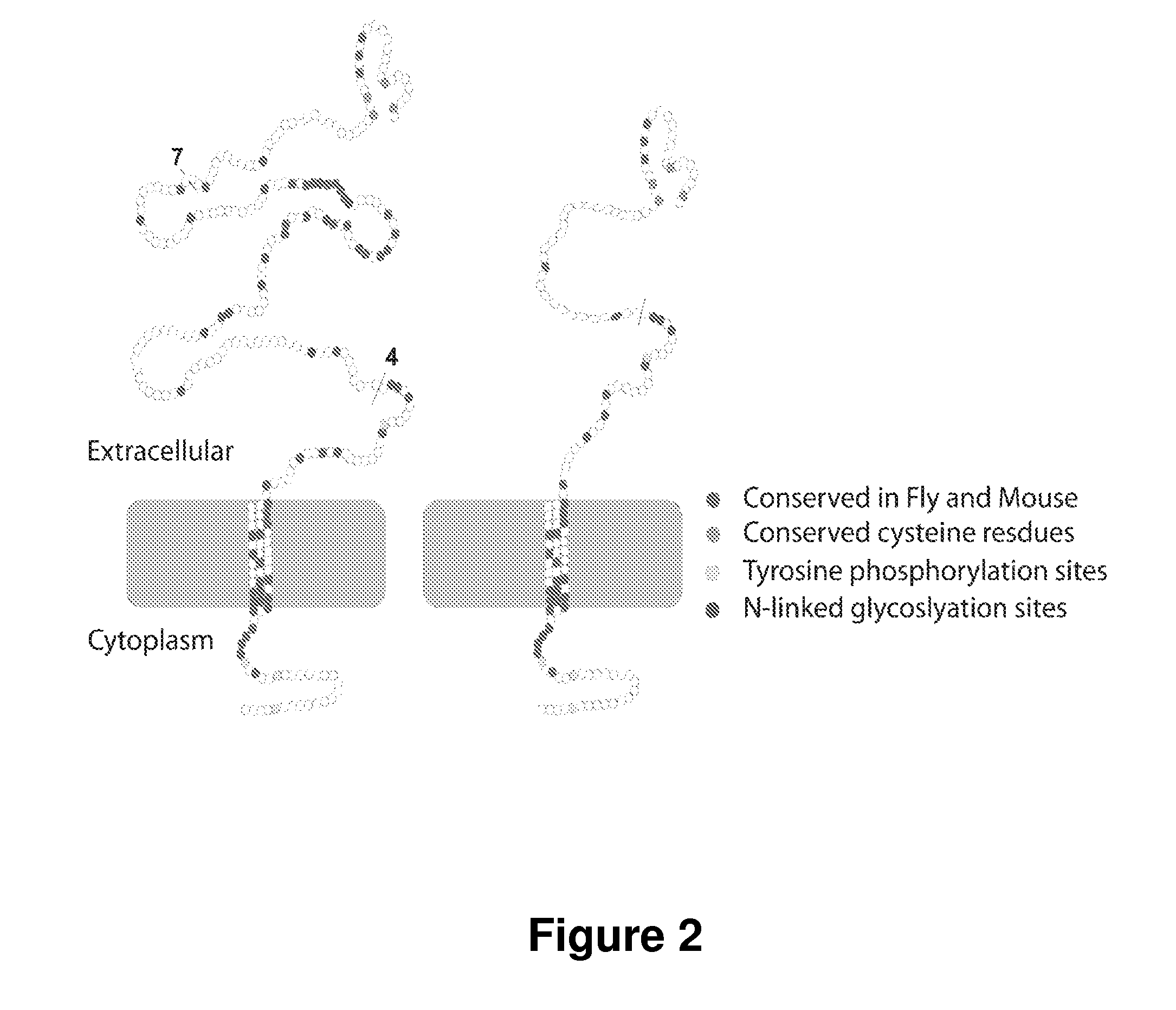Antisense Polynucleotides to Induce Exon Skipping and Methods of Treating Dystrophies
- Summary
- Abstract
- Description
- Claims
- Application Information
AI Technical Summary
Benefits of technology
Problems solved by technology
Method used
Image
Examples
example 1
Rescue Efficiency of Mammalian Full Length γ-Sarcoglycan and Mini-Sgcg in Sarcoglycan Null Flies
[0138]The sarcoglycans are conserved between Drosophila and mammals. γ-sarcoglycan null flies develop symptoms similar to mammals. Transgenic flies expressing full-length murine 7-sarcoglycan and mini-Sgcg, were generated and it was found that mini-Sgcg protein correctly localizes at the plasma membrane of fly muscle cells.
[0139]γ / δ-sarcoglycan null flies (Sgcd840) were previously generated and characterized [Allikian et al., Hum Mol Genet 16: 2933-2943 (2007)]. Using PCR and Southern blot, it has been shown that exons 1 to 3 and partial exon 4 out of the 6 exons in the Drosophila Sgcd gene is deleted in Sgcd840 flies.
[0140]To determine whether mini-Sgcg retains the function of the full-length protein, the UAS-GAL4 system was utilized [Brand et al., Development. 118: 401-15 (1993)] to express two different sarcoglycan constructs. GAL4 is a transcription factor that recognizes a specific e...
example 2
Mini-Sgcg can Replace Full-Length Sgcg in the γ-Sarcoglycan Mutant Mouse Model
[0147]By characterizing the correction of mutant phenotype in an established mouse model, a more accurate prediction of the effect of replacing the full-length γ-sarcoglycan with the truncated γ-sarcoglycan in human patients can be determined.
Transgenic Mouse Expressing Mini-Sgcg in Muscle Using the Human Desmin Promoter with the Mini-Sgcg Coding Sequence
[0148]To test the function of mini-Sgcg in mice, transgenic mice expressing murine mini-Sgcg were generated using the desmin promoter which expresses in both heart and muscle cells [Pacak et al., Genet Vaccines Ther 6: 13 (2008)]. γ-sarcoglycan is required for proper function of both heart and skeletal muscle [Zhu et al., FASEB J 16: 1096-1098 (2002)]. To assess the rescue efficiency of γ-sarcoglycan sub-domains in both muscle tissues, the human desmin promoter is used. Desmin is an intermediate filament that is expressed in all muscle tissue, including he...
example 3
Exon Skipping in Muscle Culture Derived from Human Patients
[0163]The rationale for the experiments described below is that exon skipping requires optimization of antisense polynucleotides and proof-of-function in vitro.
Use MyoD Transformation to Induce Cultured Primary Human Fibroblasts to Become Myoblasts
[0164]Fibroblasts isolated from two LGMD2C patients carrying a deletion of exon 6 in the Sgcg gene have been obtained. MyoD is a master regulator of the muscle differentiation program. Forced expression of MyoD in fibroblasts can convert the fibroblasts to a muscle lineage [Lattanzi et al., J Clin Invest 101: 2119-2128 (1998)].
[0165]MyoD is a key initiator of the skeletal muscle differentiation program [Weintraub et al., Science 251: 761-766 (1991)]. MyoD is responsible for activating other essential muscle regulators, such as myocyte enhancer factor-2 (MEF2) and myogenin. It has been shown that forced expression of MyoD in fibroblasts is able to convert fibroblasts to myoblasts bo...
PUM
| Property | Measurement | Unit |
|---|---|---|
| Electric charge | aaaaa | aaaaa |
| Strength | aaaaa | aaaaa |
| Antisense | aaaaa | aaaaa |
Abstract
Description
Claims
Application Information
 Login to View More
Login to View More - R&D
- Intellectual Property
- Life Sciences
- Materials
- Tech Scout
- Unparalleled Data Quality
- Higher Quality Content
- 60% Fewer Hallucinations
Browse by: Latest US Patents, China's latest patents, Technical Efficacy Thesaurus, Application Domain, Technology Topic, Popular Technical Reports.
© 2025 PatSnap. All rights reserved.Legal|Privacy policy|Modern Slavery Act Transparency Statement|Sitemap|About US| Contact US: help@patsnap.com



